| Rank | Change | Team | Points |
|---|---|---|---|
| 1 | 786.6 | ||
| 2 | 778.2 | ||
| 3 | 759.7 | ||
| 4 | 755.8 | ||
| 5 | 755.6 | ||
| 6 | 745.5 | ||
| 7 | 743.8 | ||
| 8 | 743.7 | ||
| 9 | 736.3 | ||
| 10 | 715.5 | ||
| 11 | 700.8 | ||
| 12 | 660.5 | ||
| 13 | 653.9 | ||
| 14 | 641.3 | ||
| 15 | 619.8 | ||
| 16 | 611.1 | ||
| 17 | 606.2 | ||
| 18 | 561.9 | ||
| 19 | 561.1 | ||
| 20 | 542.5 | ||
| *Change from 27 February 2023 | |||
The FIBA Men's World Ranking are FIBA's rankings of national basketball teams. FIBA ranks both men's and women's national teams for both senior and junior competitions. It also publishes combined rankings for all mixed-sex competitions. Not included are the rankings for three-on-three competitions, which are tabulated for individual players.
The ranking system compares teams based on the weighted average rating points they earn in games over the last eight years. Teams earn a certain amount of rating points for each game based on the margin of victory/defeat, site of game and strength of opponent. Each game's rating points are then weighted by factors including the time of game, competition/region, competition stage and round reached.
The ranking is currently sponsored by Nike; as such, the name Nike FIBA World Ranking is also used.[2]
History
In its previous ranking system before October 2017, FIBA used a competition-based system which awarded points based on the final standings of FIBA final tournaments.[3] The system weighted all results within the eight-year period equally and did not consider the results of qualifiers for tournaments.[4][5]
Until the 2016 Olympic Games, the Olympics and the men's world championship gave 5 points each toward the ranking. Since the new FIBA ranking system was launched, these two tournaments had their score devalued to 2.5 points for playing in a World championship, and 2 points for playing in an Olympic game since 2017.
Calculation
Only FIBA tournaments consisting of full five-a-side teams are used in calculations for the rankings. Other tournaments, such as regional championships, invitationals, three-on-three half-court basketball, and friendlies are not included.
On October 11, 2017, FIBA radically changed its ranking system for men's national teams when Nike became FIBA's strategic partner. The changes saw the ranking system switching from the previous competition-based system to a game-based system.[5][6] Every game played by a national team within the last eight years in the World Cup, Olympics, continental championships, and qualifiers for these events is included in the calculations.[7]
FIBA uses a weighted arithmetic mean (with a minimum divisor which is not published[8]) to determine the average points a team has earned in games in the last eight years.
Rating points per game
A team's final rating points for a particular game is the sum of basis, home/away, and opposition ranking points as follows.[7]
Basis points
Each game in a ranking tournament is initially valued at 1,000 "basis points", divided between the two teams as follows:[7]
| Victory margin | Points to winner | Points to loser |
|---|---|---|
| Less than 10 points | 700 | 300 |
| 10–19 points | 750 | 250 |
| 20 or more points | 800 | 200 |
| Forfeit | 800 | 0 |
Home or away points
The basis points are adjusted based on the site of the game, with FIBA calling this adjustment "home or away" points. During the finals of ranking tournaments, only games played by a host team in its own country count as "home" games; all others are treated as neutral-site games. Adjustments are:[7]
| Site of game | Adjustment |
|---|---|
| Home game | −70 points |
| Neutral venue | No adjustment |
| Away game | +70 points |
Opposition ranking points
The basis points are also adjusted to reflect the strength of the opponent. FIBA determines what it calls "opposition ranking points" by the following formula:[7]
- Opposition ranking points = 1.5 × (average pre-game ranking for all national teams − opponent's pre-game ranking)
Weighting
The new calculations continue to account for the specific tournament and region, as in the former procedure, but no longer explicitly consider a team's final tournament placement.[7]
The rating points of each game (above) are weighted by the game's weight (W), which is the product of the time decay, competition/region, competition stage, and round weights, as follows.[7]
Time decay
In a new feature, a "time decay" factor has been introduced into the calculations. More-recent games carry the greatest weight, steadily declining until falling out of the calculations after 8 years:[7]
| Time of game | Weighting |
|---|---|
| Current year (Y) and immediately previous year (Y−1) | 1.0 |
| Y−2 and Y−3 | 0.75 |
| Y−4 and Y−5 | 0.5 |
| Y−6 and Y−7 | 0.25 |
Competition and region weights
Each game has a specific "competition and region weight", with continental competition and FIBA World Cup qualification games assigned the weight of the respective region. FIBA World Ranking weights for men's events:[7]
| Competition | Region | Weight |
|---|---|---|
| FIBA Basketball World Cup | — | 2.5 |
| Olympic basketball tournament | — | 2.0 |
| EuroBasket | Europe | 1.0 |
| Olympic Qualifying Tournament | — | 1.0 |
| FIBA AmeriCup | Americas | 0.8 |
| FIBA Oceania Championship (defunct) | Oceania (before 2017) | 0.7 |
| FIBA Asia Cup | Asia and Oceania | 0.45 |
| AfroBasket | Africa | 0.35 |
From 2017 forward, FIBA Asia and FIBA Oceania members compete for a single regional championship under the FIBA Asia banner.[9] Results from before 2017, during which FIBA Asia and FIBA Oceania held separate championships, will continue to figure into the rankings (until 2025 via "time decay").[7]
Competition stage weight
In a new feature, FIBA also weights game results by the "competition stage weight".[7]
| Stage | Weight |
|---|---|
| European Championship for Small Countries | 0.15 |
| Pre-qualifier | 0.25 |
| Qualifier | 0.5 |
| Final tournament | 1.0 |
Round weight
Additionally, FIBA has added a "round weight" (R) to the system, giving each victory in a final tournament (World Cup, Olympics, or continental championship) a weighting based on the round in which it takes place, with later round wins weighted more greatly. Games in pre-qualifiers, qualifiers and results of the losing team in final tournaments all carry a round weight of R=1.[7]
| Round | Weight |
|---|---|
| 1 | 1.0 |
| 2 | 2.0 |
| 3 | 4.0 |
| 4 | 6.0 |
| 5 | 6.0 |
Cycle and updates
Rankings are now updated after every individual game in a ranking tournament (including qualifiers for such tournaments).
Women's rankings
FIBA still uses the competition-based system to determine its women's rankings. As noted above, this system was also used to determine men's rankings prior to 2017. FIBA introduced a game-based ranking procedure similar to that currently used for men's rankings in the indeterminate future in November 2019.[4]
Unlisted teams at FIBA Men's Ranking
The following national (men's) basketball teams is unlisted at latest FIBA Men's Ranking.
FIBA Africa
 Libya
Libya Sudan
Sudan Ethiopia
Ethiopia Djibouti
Djibouti Seychelles
Seychelles Mauritius
Mauritius Comoros
Comoros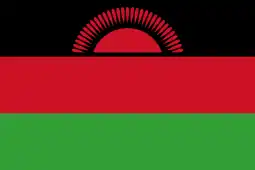 Malawi
Malawi Lesotho
Lesotho Eswatini
Eswatini Botswana
Botswana Namibia
Namibia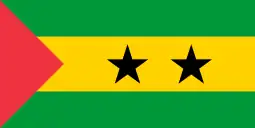 São Tomé and Príncipe
São Tomé and Príncipe Niger
Niger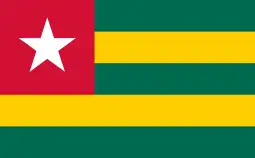 Togo
Togo Ghana
Ghana Liberia
Liberia Sierra Leone
Sierra Leone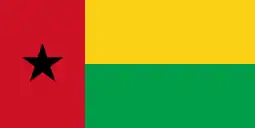 Guinea-Bissau
Guinea-Bissau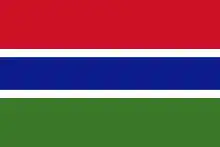 Gambia
Gambia Mauritania
Mauritania
FIBA Asia
FIBA Europe
FIBA Oceania
 East Timor
East Timor Palau
Palau Northern Mariana Islands
Northern Mariana Islands Micronesia
Micronesia Papua New Guinea
Papua New Guinea Solomon Islands
Solomon Islands Vanuatu
Vanuatu New Caledonia
New Caledonia Nauru
Nauru Marshall Islands
Marshall Islands Kiribati
Kiribati Norfolk Island
Norfolk Island Tuvalu
Tuvalu
Notes and references
- ↑ "FIBA Ranking Presented by Nike". FIBA. 10 September 2023. Retrieved 10 September 2023.
- ↑ "FIBA signs 11-year strategic partnership with iconic basketball brand Nike". FIBA. 27 February 2017. Retrieved 27 November 2023.
- ↑ "FIBA World Rankings: How it works". FIBA. Archived from the original on 25 May 2007.
- 1 2 "FIBA World Ranking Men, presented by Nike – Frequently Asked Questions (FAQ)" (PDF). FIBA. Retrieved 16 October 2017.
- 1 2 Hall, Andy (27 August 2023). "What's the current FIBA ranking and how often is it updated?". Diario AS. Retrieved 12 November 2023.
- ↑ "New FIBA World Ranking Men presented by Nike launched". FIBA. 11 October 2017. Retrieved 22 August 2023.
- 1 2 3 4 5 6 7 8 9 10 11 12 "FIBA World Ranking Men, presented by Nike — How it works". FIBA. Retrieved 12 October 2017.
- ↑ "Detailed Examples" (PDF). FIBA.
- ↑ "How does it work? FIBA National Team Competitions System & Calendar". FIBA. Retrieved 18 December 2023.
External links
- Examples of ranking calculations at FIBA's official site.
